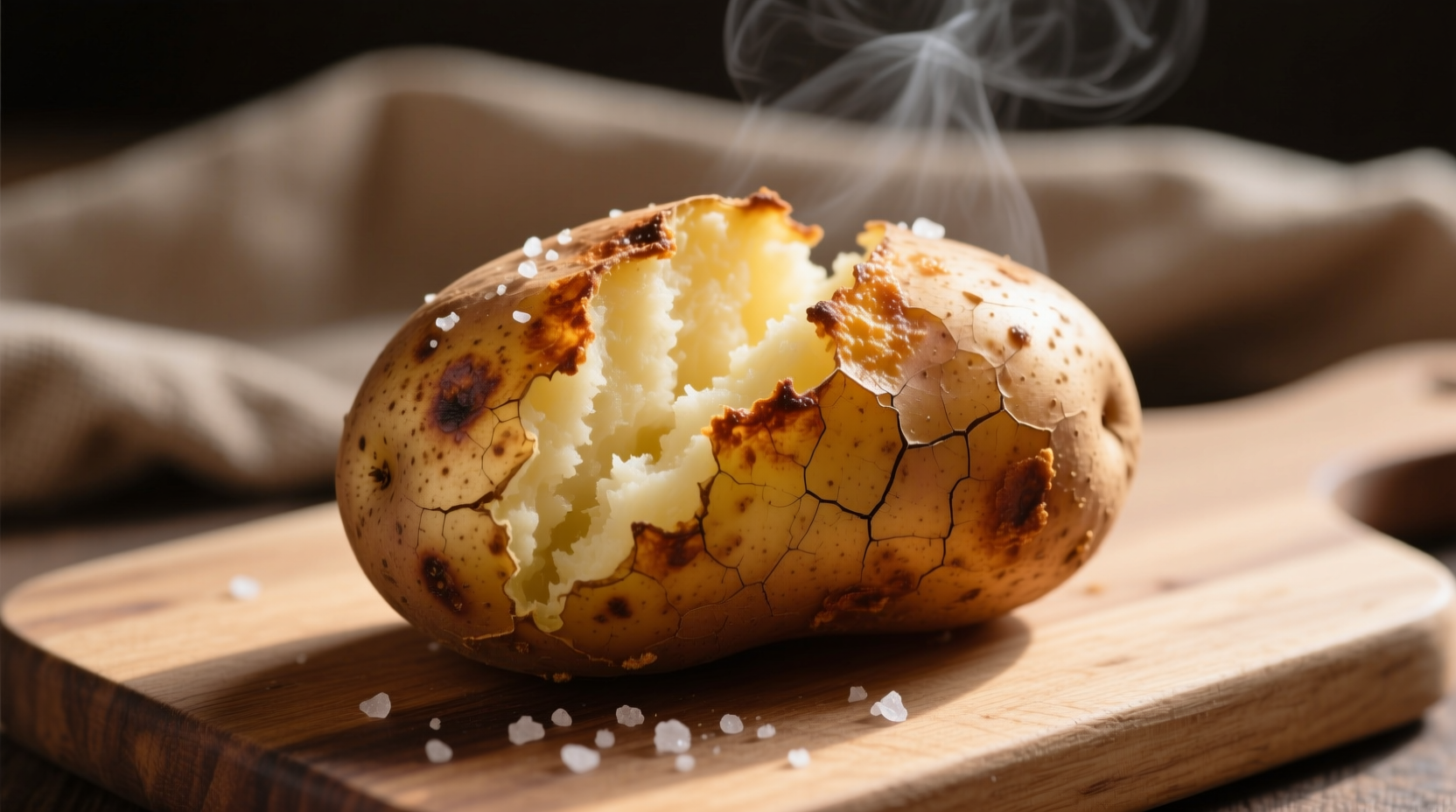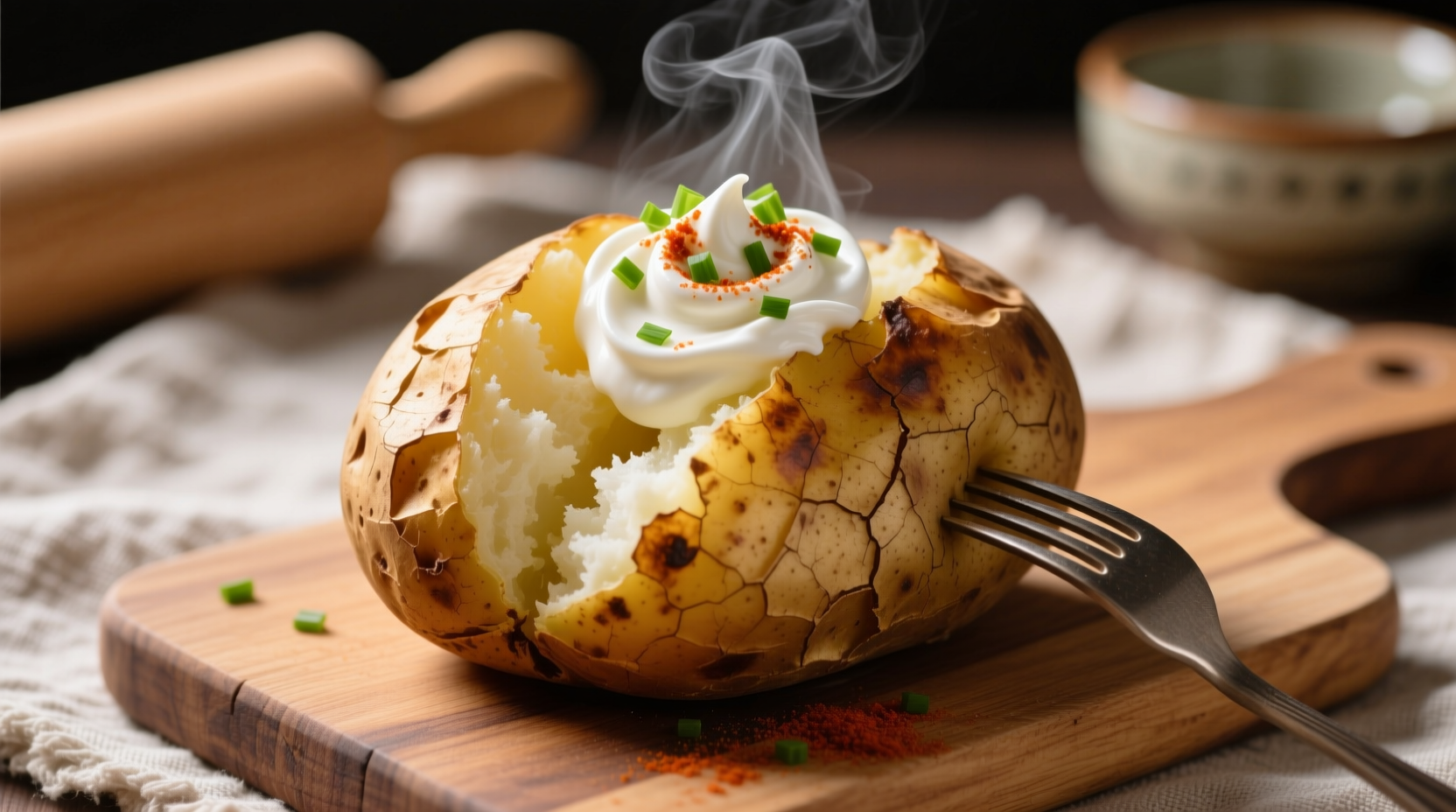The perfect baked potato requires russet potatoes, proper preparation (thorough cleaning and strategic poking), baking at 400°F (200°C) for 45-60 minutes, and a crucial 5-10 minute resting period. This scientifically-backed method delivers consistently fluffy interiors with delightfully crispy skin—no special equipment needed.
Forget dry, unevenly cooked potatoes that leave you disappointed. Achieving bakery-quality results at home is simpler than you think when you understand the food science behind perfect baking. As a chef who's tested hundreds of potato preparations across professional kitchens and home stoves, I've discovered that three critical factors determine success: potato selection, moisture management, and heat distribution. Get these right, and you'll never settle for mediocre baked potatoes again.
Why Your Baked Potatoes Fail (And How to Fix Them)
Most home cooks make the same critical mistakes that sabotage their baked potatoes before they even go in the oven. Understanding these pitfalls transforms your results:
- Choosing the wrong variety - Not all potatoes behave the same when baked
- Skipping the poking step - Creates dangerous pressure buildup
- Wrapping in foil - Traps steam, creating soggy skin instead of crispy perfection
- Incorrect temperature - Too low yields dense interiors; too high burns skin before interior cooks
| Potato Variety | Starch Content | Moisture Level | Best Baking Method | Texture Result |
|---|---|---|---|---|
| Russet (Idaho) | High (22-24%) | Low | Oven (400°F) | Fluffy, light interior |
| Yukon Gold | Medium (18-20%) | Medium | Oven (375°F) | Creamy, buttery texture |
| Red Potato | Low (15-17%) | High | Not recommended | Dense, waxy texture |
Source: USDA Agricultural Research Service Potato Composition Database (fdc.nal.usda.gov)
Your Step-by-Step Path to Potato Perfection
Step 1: Selecting the Right Potato
Russet potatoes (often labeled Idaho potatoes) are your best choice for classic baked potatoes. Their high starch and low moisture content creates that signature fluffy interior. Look for firm potatoes without green spots, sprouts, or significant bruises. Medium-sized potatoes (about 8-10 ounces) cook most evenly—avoid oversized specimens that often have hollow centers.
Step 2: Proper Preparation Technique
This is where most recipes go wrong. Follow these precise steps:
- Wash thoroughly under cold running water using a vegetable brush
- Dry completely with paper towels (critical for crispy skin)
- Poke 8-12 holes evenly around the potato with a fork (not a knife)
- Rub with 1/2 teaspoon oil and sprinkle with coarse salt
- Place directly on oven rack with baking sheet on lower rack to catch drips

Step 3: The Oven Method (For Ultimate Results)
Preheat your oven to 400°F (200°C) with rack in the center position. Place potatoes directly on the oven rack with a baking sheet on the rack below to catch any drips. Bake for 45-60 minutes, depending on size. Test for doneness by gently squeezing (use oven mitts!) or inserting a fork—it should slide in with no resistance.
Pro Tip: For extra-crispy skin, turn off the oven when potatoes are done and leave them inside with the door slightly ajar for 10-15 minutes. This continues the drying process without overcooking.
Step 4: The Microwave Shortcut (When Time Is Limited)
While not as ideal as oven baking, this method works in a pinch:
- Prick potato thoroughly with fork
- Place on microwave-safe plate
- Cook on high for 5 minutes, flip, then cook 3-5 more minutes
- Finish in 450°F oven for 10 minutes to crisp skin
Important context boundary: Never microwave potatoes without piercing them first. The FDA warns this creates dangerous pressure buildup that can cause explosions (fda.gov). Always use oven mitts when handling microwaved potatoes as they can become superheated.
Step 5: The Critical Resting Period
Resist the urge to slice immediately! Let potatoes rest for 5-10 minutes after cooking. This allows the starch structure to set, preventing a gummy texture when you fluff the interior. During this time, the residual heat continues cooking the center while the skin dries further.
Troubleshooting Common Potato Problems
Soggy Skin Solution
If your skin isn't crispy, you likely didn't dry the potato thoroughly before baking or wrapped it in foil. For immediate correction, return the potato to a 425°F oven for 8-10 minutes. Never skip the oil and salt application—they create a barrier that helps moisture escape.
Hard Center Fix
When the center remains hard while the exterior is done, you've experienced uneven heat distribution. Next time, try flipping potatoes halfway through baking. If already cooked, slice open, fluff interior with fork, and return to oven for 5-7 minutes.
Elevate Your Baked Potato Game
Once you've mastered the basics, experiment with these professional techniques:
- Infused oils: Rub potatoes with rosemary-garlic oil before baking
- Steam pocket: Place a teaspoon of water in the slit after baking for extra-fluffy interior
- Salt crust: Bury potatoes in coarse salt for even heating and dramatic presentation
Classic & Creative Toppings
While butter and sour cream remain popular, try these chef-approved combinations:
- Loaded Baked Potato: Crispy bacon, sharp cheddar, chives, and sour cream
- Mediterranean Style: Olive oil, feta cheese, Kalamata olives, and oregano
- Breakfast Twist: Fried egg, avocado, and everything bagel seasoning











 浙公网安备
33010002000092号
浙公网安备
33010002000092号 浙B2-20120091-4
浙B2-20120091-4